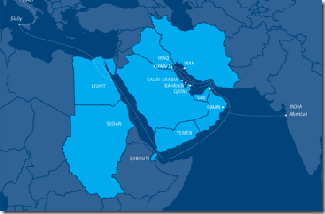Qtel has concluded an agreement with Gulf Bridge International (GBI), the Middle East’s first privately owned submarine cable operator, which will see Qtel provide a landing station for GBI’s cable in Qatar. This follows an announcement on February 7 that Vodafone Qatar would provide a landing station for the GBI submarine cable.
 "The superior capacity provided by this new partnership is a big step towards realising our vision to make Qatar one of the best connected countries in the world," commented Qtel’s CEO Nasser Marafih at the signing of the deal.
"The superior capacity provided by this new partnership is a big step towards realising our vision to make Qatar one of the best connected countries in the world," commented Qtel’s CEO Nasser Marafih at the signing of the deal.
The GBI Cable System will connect all the countries of the Gulf region to each other and provide onward connectivity to Europe and Asia. Scheduled to launch in 2011 and designed to operate for up to 25 years, the system has a design capacity of up to five terabits per second on certain cable sections, providing the capability to meet the rapid growth in demand that has been forecast for traffic originating and terminating in the Gulf.
The other operators who have inked similar agreements to provide landing stations for the cable system other than Vodafone Qatar are Bahrain’s Batelco, Saudi Arabia’s STC and the UAE’s Du.



